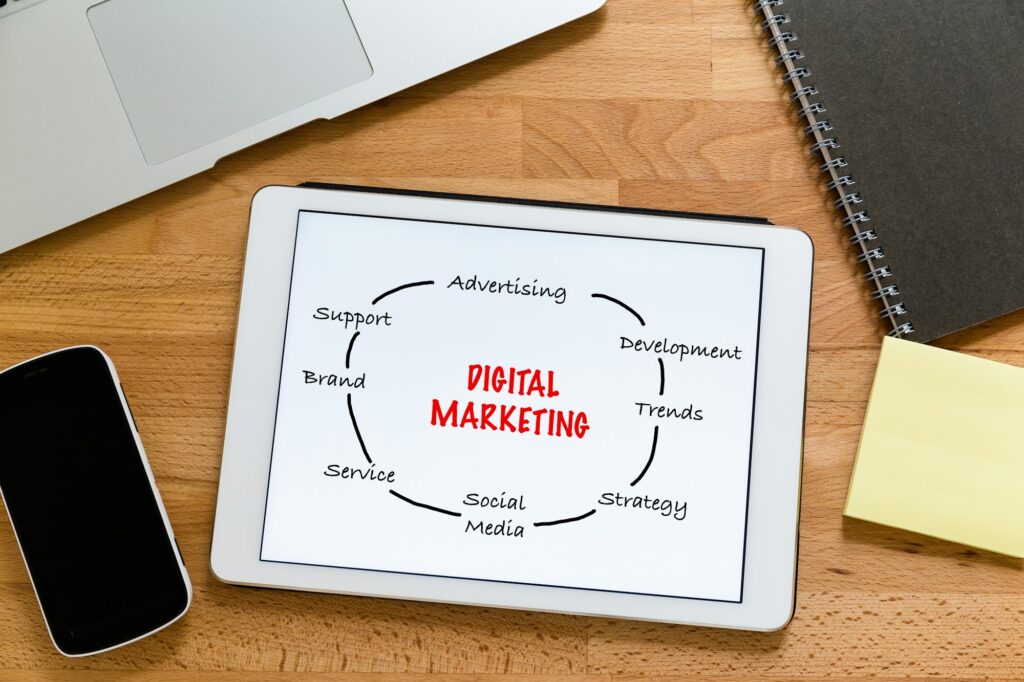In the ever-evolving digital landscape, where virtual connections are woven into the fabric of our daily lives, social media advertising has emerged as a powerhouse of marketing potential. It’s a realm where creativity meets precision, and where the impact of a well-crafted ad can reverberate across the globe in seconds. In this comprehensive guide, we’ll embark on a journey through the world of social media advertising. We’ll introduce you to the concept, dissect major advertising platforms like Facebook, Instagram, and LinkedIn, delve into the art of audience targeting and ad creatives, explore the intricacies of measuring ROI through key performance indicators (KPIs), and accompany you through real-world case studies that illuminate the path to successful social media advertising campaigns.
Introducing Social Media Advertising
At its core, social media advertising is a form of digital marketing that leverages social media platforms to promote products, services, or brands. Unlike traditional advertising methods, social media advertising allows businesses to reach a highly targeted audience with precision. It’s not just about throwing content out into the digital abyss; it’s about crafting strategic messages that resonate with specific demographics and interests.
Why Social Media Advertising Matters
In a world where billions of people are connected through social media, the potential reach of social media advertising is staggering. Consider this: according to the Pew Research Center, in the U.S. alone, 72% of adults use at least one social media platform. This means that your potential audience is not just sizable; it’s also engaged and active.
Moreover, social media advertising offers a level of customization and control that is unparalleled. You can precisely define who sees your ads, ensuring that your marketing efforts are directed towards individuals most likely to convert into customers. This level of targeting is a game-changer in the marketing world.
Major Social Media Advertising Platforms
Now that we understand the importance of social media advertising, let’s take a closer look at some of the major platforms where these campaigns come to life.

1. Facebook Advertising
Facebook is the juggernaut of social media advertising, boasting over 3 billion active users. Its advertising platform offers a myriad of targeting options, from demographics like age and location to interests and behaviors. You can run various ad formats, including image ads, video ads, and carousel ads. The platform also provides robust analytics to track your ad performance.
2. Instagram Advertising
Instagram, owned by Facebook, has emerged as a visual storytelling paradise. With over 2.3 billion active users, it’s a hotspot for businesses looking to engage with a younger, visually-oriented audience. Instagram ads include photo ads, video ads, carousel ads, and Stories ads, allowing you to get creative with your content.
3. LinkedIn Advertising
LinkedIn, the professional networking platform, is a goldmine for B2B marketers. With over 760 million users, it’s the go-to platform for reaching a business-focused audience. LinkedIn offers targeted advertising options based on job titles, industries, and company size. Sponsored content, sponsored InMail, and display ads are popular ad formats on LinkedIn.
Audience Targeting and Compelling Ad Creatives
The success of a social media advertising campaign hinges on two critical components: audience targeting and ad creatives.
Audience Targeting
Audience targeting is the art of defining who sees your ads. Social media platforms offer a plethora of targeting options, allowing you to hone in on your ideal customer. Consider demographics like age, gender, location, and interests. The more precise your targeting, the higher the likelihood of conversion.
Compelling Ad Creatives
While targeting ensures your ad reaches the right people, compelling ad creatives ensure they take action. Your ad creative is your chance to tell a story, evoke emotions, and persuade your audience. Visual appeal matters here. Invest in high-quality images or videos. Craft persuasive copy that speaks directly to your audience’s pain points or desires.
Remember, in the fast-scrolling world of social media, you have mere seconds to capture attention. Make those seconds count.
Measuring ROI and Optimizing Ad Campaigns
You’ve launched your social media advertising campaign, but how do you know if it’s successful? This is where measuring Return on Investment (ROI) and optimizing your campaigns come into play.
Key Performance Indicators (KPIs)
KPIs are the metrics that help you gauge the success of your campaign. Some common KPIs for social media advertising include:
- Click-Through Rate (CTR): The percentage of people who clicked on your ad after seeing it.
- Conversion Rate: The percentage of people who took the desired action (e.g., made a purchase) after clicking on your ad.
- Cost Per Click (CPC): The amount you pay each time someone clicks on your ad.
- Return on Ad Spend (ROAS): The revenue generated for every dollar spent on advertising.
Optimizing Campaigns (A/B Testing)
Optimization is an ongoing process. A/B testing involves creating two versions of an ad (A and B) with slight variations and showing them to different segments of your audience. By comparing the performance of A and B, you can refine your ad creatives, targeting, and bidding strategies to improve ROI.
Case Studies: The Road to Success
To truly understand the potential of social media advertising, let’s explore a couple of real-world case studies:

Airbnb
Airbnb, the global online marketplace for lodging and travel experiences, used Instagram’s ad platform to showcase unique and stunning properties from around the world. Their visually captivating ads resonated with users’ desires for immersive travel experiences.
The result? A significant increase in user engagement and bookings.

Nike
Nike’s “Breaking2” campaign was a monumental endeavor to break the two-hour marathon barrier. They used Facebook to livestream the event, garnering over 13 million views. The campaign not only generated immense brand buzz but also drove sales, with running shoe sales spiking during the livestream.
In Conclusion
Social media advertising is a dynamic and powerful tool in the modern marketer’s arsenal. It allows you to reach a vast and engaged audience, customize your messaging, and track your campaign’s success with precision. By understanding the major advertising platforms, mastering audience targeting, and creating compelling ad creatives, you can set the stage for a successful campaign.
But remember, the digital landscape is ever-changing. To stay ahead in the world of social media advertising, continually measure your ROI, optimize your campaigns, and draw inspiration from real-world case studies. As you navigate this exciting realm, remember that success lies at the intersection of creativity and data-driven decision-making. So, go ahead, embark on your social media advertising journey, and let your brand shine in the digital spotlight.






